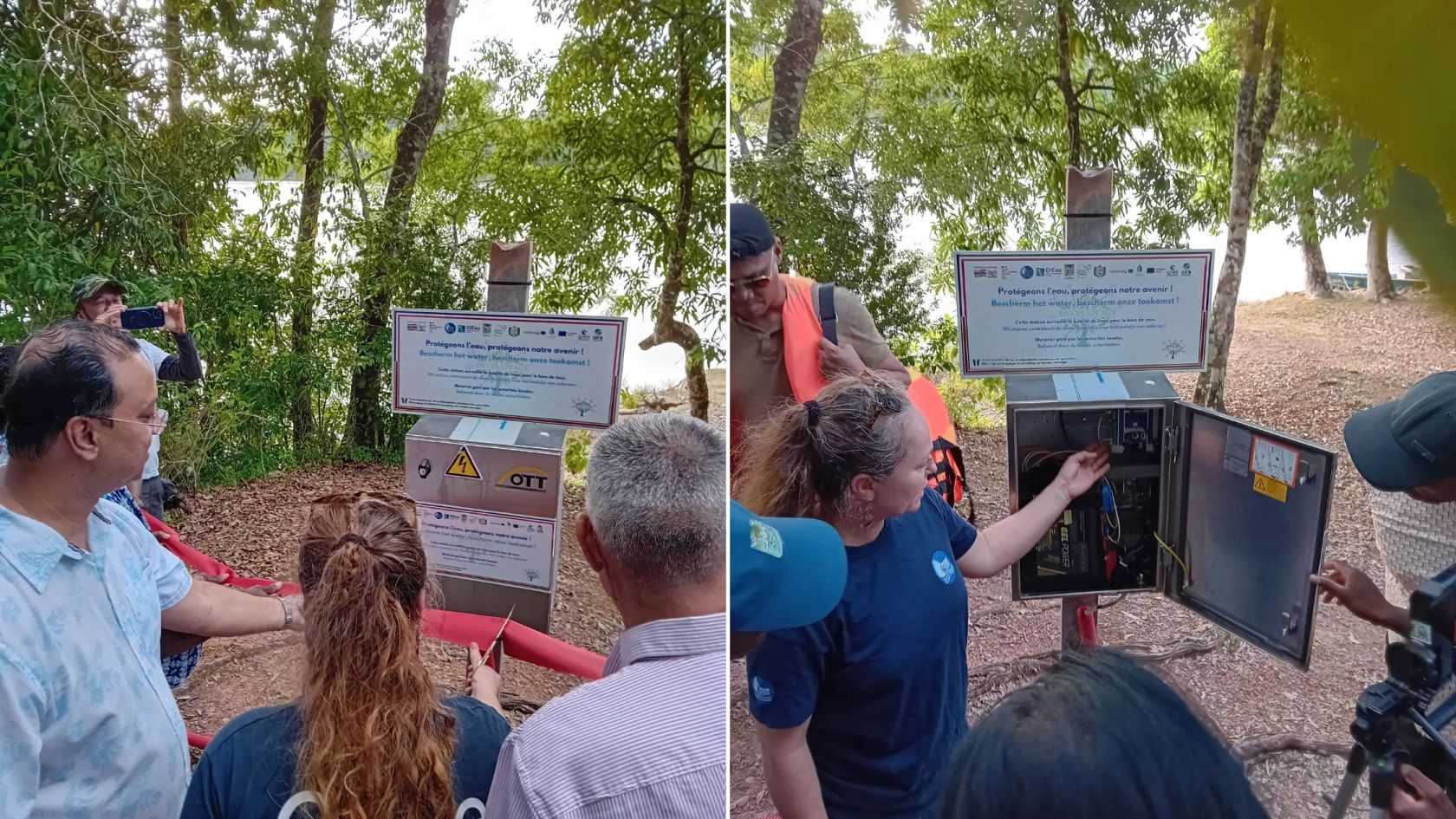Interreg Amazonia program is playing a pivotal role in fostering cross-border collaboration between the EU outermost region of French Guiana and its neighbours Suriname, and Brazil through the BIO-PLATEAUX project. This initiative improves the management of water resources and aquatic biodiversity in the Maroni and Oyapock river basins, which span in the Guiana Shield region of South America.
Cohesion Policy Interreg programme enhances transboundary water management in the Guiana Shield
- 16 April 2025

A Unique Cross-Border Ecosystem in the Heart of the biggest national park of the European Union
Located in the Guyana Shield, the Maroni and Oyapok rivers are shared by Surinam, French Guyana and Brazil. Their transboundary river basins in the heart of the Amazon rainforest are home to exceptional natural ecosystems and populations of Creole, Amerindian, Asian, Brazilian and Maroon descent with rich and diverse customs. Maroni and Oyapok constitute both borders and contact points enabling exchanges from one bank to the other.
Environmental Pressures in Amazonia
However, these exceptional rivers are facing strong pressures. First of all illegal gold mining which pollutes by spilling mercury directly into the environment and also by re-mobilizing mercury formerly locked in the soil. As a result fish are contaminated with mercury and at the end of the food chain human health is endangered. Illegal gold mining also impacts sediment transport in waterways and leads to the degradation of riverbanks.
Maroni and Oyapok river basins are experiencing rapid population growth and when the river overflows its banks populations are very vulnerable to flooding. Access to essential services such as clean drinking water remains a challenge in the most isolated areas. Waste management and wastewater treatment are often poorly developed.
Interreg Bio-Plateaux: A Platform for Data Sharing and Collaboration
To tackle all these challenges, the cooperation between governments, local authorities and communities to work together across the borders was established under Interreg Amazonia 2014-2020 programme.
First step was the Bio-Plateaux project, launched in 2019, which created a multilingual online platform that facilitates the sharing of data, documents, and experiences related to water and aquatic biodiversity. This platform serves as a valuable resource for researchers, technical experts, decision-makers, and citizens, providing access to up-to-date and high-quality information on water resources.
Improving management of water resources entails taking into account the needs of populations and their daily reality. A significant milestone in the project was the recent inauguration of a real-time turbidity monitoring station in Grand-Santi, French Guiana. This station measures water clarity, providing crucial data to detect pollution levels, particularly those associated with human activities such as gold mining. The data collected enables local authorities to take timely actions to protect public health and the environment.
Continuing Success Towards a Transboundary Water Observatory
The success of Bio-Plateaux under 2014-2020 Interreg Amazonia is being continued in the second phase of the project under the Interreg Amazonia 2021-2027.
The second phase aims to create a trans-boundary observatory to ensure that the exceptional natural environment of Maroni and Oyapock river basins, is better taken into account in development projects in conjunction with existing consultation bodies such as the river councils. The observatory will be strengthening water governance and planting capacities delivering benefits for the populations living in these river basins.
The Bio-plateaux initiative promotes smoother cooperation between all stakeholders from French Guiana, Suriname, and Brazil encouraging them to share data, experiences and knowledge. The project underscores the importance of EU Interreg funding in facilitating regional cooperation to address environmental challenges.
By promoting joint governance and river basin planning, the project contributes to the sustainable management of shared water resources and the preservation of aquatic biodiversity in the Guiana Shield.
For more information visit www.bio-plateaux.org
